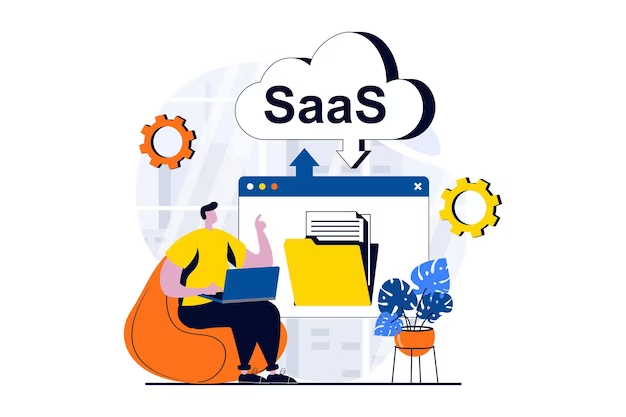Software piracy, a pervasive issue plaguing the digital realm, encompasses a range of illicit activities—copying, distribution, and unauthorized use. This underlines the urgency to understand and combat this threat, steering our focus towards implementing effective DRM encryption strategies.
The roots of software piracy trace back to the early days of computing, a time marked by enthusiasts sharing basic applications. However, as technology burgeoned, piracy evolved, entailing sophisticated methods that cost developers billions annually. The breadth of software piracy widened, encapsulating practices from counterfeiting to hard disk loading.
The Multifarious Landscape of Software Piracy
Software piracy encompasses an array of illicit activities that infringe upon licensing agreements and copyright laws. From the proliferation of counterfeit software to unauthorized sharing and distribution, the spectrum of software piracy includes:
- End-User Piracy: Users breaching licensing agreements by installing a single licensed software copy on multiple devices or sharing licensed software among multiple users without authorization.
- Counterfeiting: Replicating software and associated documentation to mimic the original product, deceiving consumers into purchasing counterfeit copies.
- Internet Piracy: Illegally downloading, sharing, or distributing copyrighted software through file-sharing networks, torrent sites, or unauthorized download sources.
- Hard Disk Loading: Pre-installing unauthorized copies of software on computers sold to consumers, often without appropriate licensing or user knowledge.
- Software Cracking: Altering software to bypass copy protection or licensing restrictions, enabling unauthorized use or distribution.
The Evolving Realm of Video Piracy
Video piracy presents a parallel spectrum of unauthorized activities that encroach upon the rights of content creators and distributors. Its manifestations include:
- Camcording: Illegally recording movies or shows in cinemas using recording devices and disseminating unauthorized recordings online or through physical copies.
- Streaming Piracy: Illegally streaming copyrighted video content without obtaining proper licenses or permissions from the content owners.
- Torrenting: Sharing or downloading movies, TV shows, or videos through peer-to-peer file-sharing networks without the copyright owner’s authorization.
- Physical Piracy: Producing unauthorized copies of DVDs, Blu-rays, or other physical media and distributing them without proper permissions.
- IPTV and Live Streaming Piracy: Unlawfully distributing or accessing live television broadcasts or premium channels without proper authorization or subscription.
Impact and Imperative for Action
The ramifications of piracy extend beyond revenue loss, impacting industries, creativity, and economies. Piracy impedes innovation, compromises quality, jeopardizes data security, and undermines the rights of creators, necessitating concerted efforts to combat its proliferation.
Addressing piracy demands a comprehensive approach involving technological advancements, legal frameworks, consumer education, and collaborative initiatives among stakeholders. By fortifying defenses and fostering a culture of ethical consumption, we endeavor to protect intellectual property rights and uphold the integrity of creative content and software in the digital sphere.
Effects of Video Piracy:
- Financial Loss: Video piracy results in substantial revenue loss for filmmakers, production houses, and distributors. Illegal downloads, streaming, or counterfeit DVDs undermine legitimate sales and affect profits.
- Creative Discouragement: Piracy undermines the creative endeavors of filmmakers, discouraging innovation and investment in new content. This impacts the quality and variety of entertainment available to audiences.
- Erosion of Industry Growth: The revenue loss due to piracy hampers investments in new productions, technological advancements, and talent development, hindering the overall growth of the entertainment industry.
- Impact on Jobs and Economy: Reduced revenues in the entertainment sector can lead to job losses, impacting various roles in film production, distribution, marketing, and associated services, ultimately affecting the economy.
- Quality Concerns: Pirated copies often compromise quality, leading to inferior viewing experiences for consumers. Poor-quality pirated videos may deter audiences from pursuing legitimate options.
Effects of Software Piracy:
- Financial Loss for Software Developers: Software piracy significantly impacts the revenue streams of software developers, deterring investment in research, development, and customer support.
- Security Risks: Pirated software often lacks security updates and patches, exposing users to vulnerabilities and cybersecurity threats. This compromises data integrity and privacy.
- Economic Impact: The economic consequences of software piracy extend beyond the software industry, affecting national economies due to lost tax revenues and job opportunities.
- Inhibition of Innovation: Reduced revenues limit the capacity of software companies to invest in innovation and the development of new and improved products, impacting technological advancement.
- Legal and Reputational Risks: Organizations using pirated software face legal liabilities and reputational damage, which can have long-term consequences on their operations and relationships.
Both video piracy and software piracy pose multifaceted challenges, impacting revenues, innovation, consumer experiences, and legal landscapes. Addressing these issues requires collaborative efforts involving technological advancements, legislative measures, education, and consumer awareness to ensure a fair and sustainable digital environment for creators, consumers, and industries.
Efforts to curb piracy included legislation, such as the Computer Software Copyright Act of 1980, alongside additional protections for developers. Despite these measures, piracy persists, necessitating a transformative approach.
DRM encryption emerges as a stalwart shield, especially in the realm of video piracy. Its impact lies in thwarting unauthorized copying, leveraging dynamic watermarking, and harnessing user analytics. The effectiveness of Google & Apple DRM encryption, a pinnacle in this battle, stands as a testament to combating illegal downloads.
To combat piracy effectively, understanding the nuances of common piracy types becomes imperative. While software piracy spans multiple activities, video piracy resonates similarly, with its challenges.
In essence, the battle against piracy demands multifaceted solutions. DRM encryption, fortified by innovative strategies and industry-leading practices, heralds a new frontier in safeguarding digital content. By understanding the intricacies and adopting robust encryption methods, we forge a path toward a more secure digital landscape.




